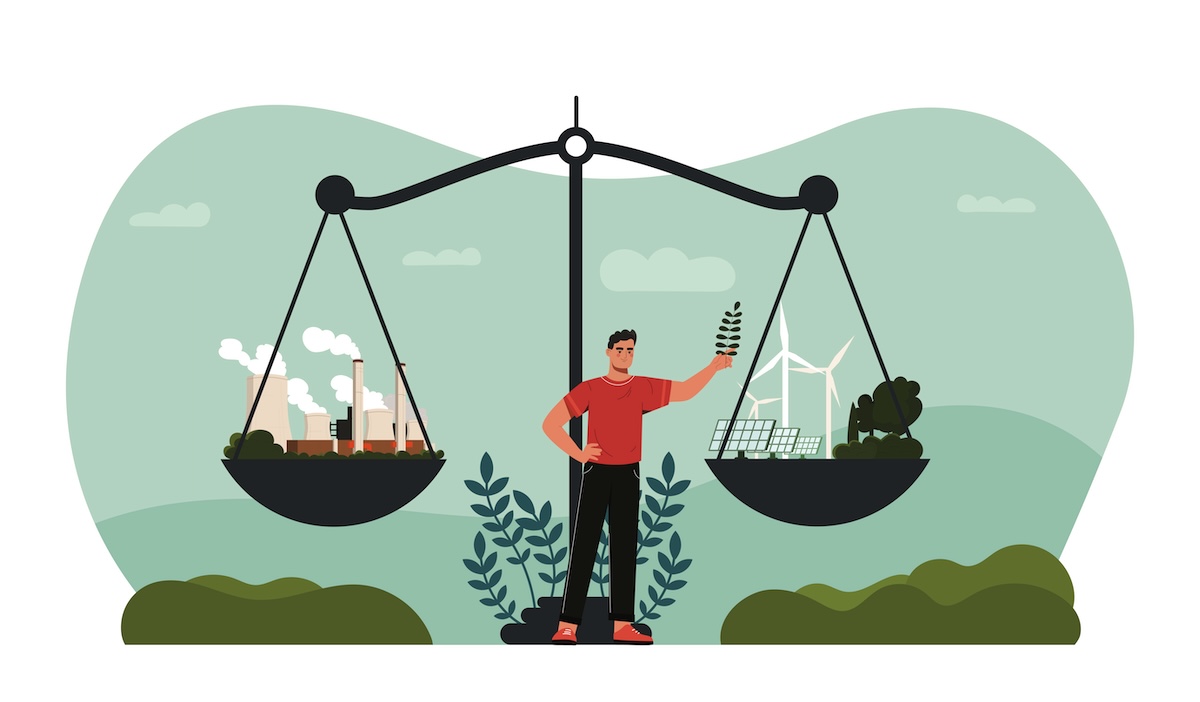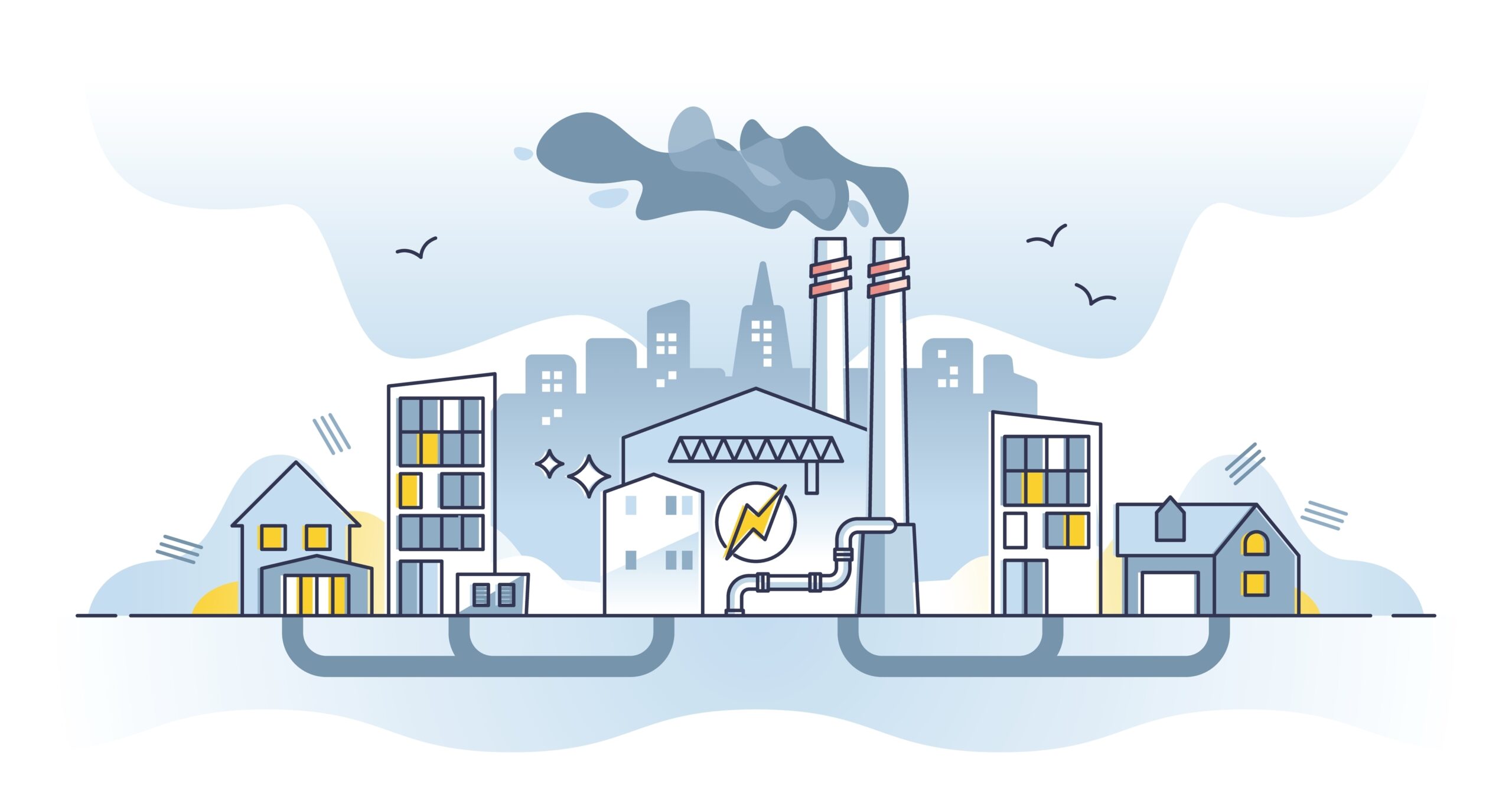Executive Summary
This paper explores a powerful reframing of the UK’s net-zero goal: the high-efficiency economy.
Rather than presenting carbon reduction as a moral or regulatory imperative, it positions energy efficiency as a commercially sound strategy with measurable returns. Drawing on credible data, real-world client insights, and strategic commentary, we show how widespread investment in efficiency-driven projects can achieve national carbon targets while accelerating economic performance.
High efficiency shifts the conversation—from compliance to competitiveness, and from obligation to opportunity. It invites broader engagement across finance, procurement, and operations. And it delivers results.
Reframing Net Zero: The Case for a High-Efficiency Economy
The UK’s commitment to achieving a net-zero economy by 2050 has triggered extensive investment, policy development, and innovation. Yet the language surrounding net zero still fails to resonate with many commercial decision-makers. It often reads as a moral obligation rather than a compelling business case. In contrast, the concept of a high-efficiency economy offers a more pragmatic and financially motivated framework—one that aligns carbon reduction targets with improved profitability and operational effectiveness.
The opportunity in reframing is not academic. It’s operational. Businesses are more likely to invest when the narrative speaks their language—return on investment, productivity, and performance. What we’re seeing is that efficiency, when positioned as the central aspiration, unlocks wider buy-in across procurement, finance, and operations. This approach makes sustainability tangible and measurable.
Building on themes from our previous papers, particularly those exploring independence in infrastructure and strategic foresight in energy planning, this paper presents high efficiency as a direct pathway to net zero. The fundamental shift is in justification: focusing on returns rather than regulations. Our paper on proactive equipment investment laid the groundwork by showing how strategic upgrades deliver resilience. Here, we extend the argument to show how widespread adoption of efficiency-led projects can help meet national carbon goals without relying on abstract targets.
As Sean said in our infrastructure strategy discussion, “Efficiency isn’t just a technical metric. It’s the language of CFOs, boards, and shareholders. When we talk about carbon through the lens of efficiency, we’re speaking in terms that drive action.”
This is a conversation backed by hard data. The International Energy Agency has reported that doubling global energy efficiency improvement rates by 2030 could deliver over 40 percent of the emissions reductions required by the Paris Agreement. This is a significant figure, especially considering the marginal costs associated with efficiency compared to alternative decarbonisation methods. The Confederation of British Industry adds further weight, noting that the UK’s net-zero economy contributed £83.1 billion to GDP in 2024 while supporting nearly one million jobs. These figures are not theoretical. They reflect tangible economic momentum sparked by energy-smart investments.
More locally, our clients have seen measurable returns from efficiency-focused interventions. Heat recovery, LED retrofits, and smart controls are no longer niche upgrades, they are central components in asset planning. These interventions deliver short payback periods, improve operational transparency, and reduce maintenance costs. One client achieved a 28 percent reduction in energy spend within six months by integrating efficiency-led controls across its estate. It wasn’t framed as sustainability. It was framed as strategic asset optimisation.
Neill shared this point during a recent stakeholder roundtable: “When businesses invest in efficiency, they’re not just cutting carbon. They’re upgrading their operations. It’s the difference between compliance and competitiveness.”
This reframing also addresses one of the greatest obstacles to energy transition: the misconception that sustainability equals sunk cost. High-efficiency initiatives flip the narrative. Carbon savings emerge as natural byproducts of smarter systems, better equipment, and optimised processes. Whether it’s heat recovery, predictive maintenance or targeted controls, the strategies are familiar—but their financial rationale gains renewed clarity.
As Andrew put it in our ESOS and SECR integration guide, “We’re not asking clients to go green for the sake of it. We’re showing them how efficiency pays for itself.. and then some.”
Regulatory frameworks can support this shift. Policies like the Public Sector Decarbonisation Scheme or Enhanced Capital Allowances already encourage energy-smart investment—but uptake increases when the messaging aligns with business strategy. Rather than positioning compliance as a driver, we can frame regulation as a facilitator of commercial advantage. For example, aligning ESOS Phase 3 audits with internal asset planning allows organisations to blend compliance with upgrade roadmaps. The carbon savings follow naturally.
The national potential is enormous. Scaling efficiency-driven projects across commercial estates, industrial clusters and public infrastructure would significantly advance the UK’s carbon targets. According to forecasts from the Department for Energy Security and Net Zero, existing pathways are feasible only if short-term, ROI positive efficiency gains are widely adopted. The Climate Change Committee has reiterated that energy efficiency remains one of the most cost-effective levers for rapid decarbonisation, yet implementation lags without clear commercial framing.
The high-efficiency economy model has broader implications as well. It recalibrates stakeholder engagement. Where net zero often invites scrutiny over feasibility, efficiency invites collaboration. It opens the door for new partnerships across energy suppliers, finance teams and technology providers. When framed this way, energy transition becomes a shared ambition grounded in operational improvement.
This is not a rejection of net zero. It is a strategic recalibration. By framing the objective as a high-efficiency economy, we unlock wider engagement, more targeted investment and stronger momentum. It’s about building a carbon-conscious future that speaks directly to financial stakeholders, procurement teams and operational leads. A high-efficiency economy is cleaner, smarter and far more investable than its predecessors.
As our consultancy continues to guide clients through energy audits, investment planning and project execution, the efficiency narrative will remain central. Because when efficiency becomes the metric, carbon reduction becomes the result.
Conclusion
The high-efficiency economy is more than an alternative lens, it’s a strategic upgrade to how we frame and implement carbon reduction. By translating environmental goals into language that commercial stakeholders understand and value, we build a path to net zero grounded in realism, data and profitability.
We believe that the future of sustainability lies not in mandates, but in motivation. When efficiency is the priority, sustainability follows. And when the business case is clear, progress becomes inevitable.
Written by Andrew Hawley
Date: July 21st 2025








